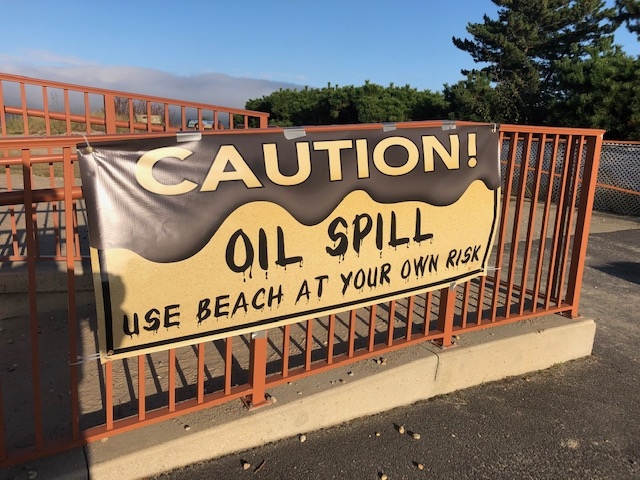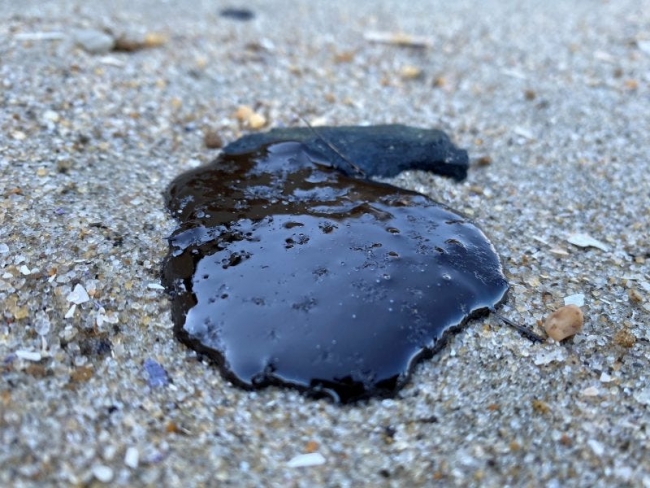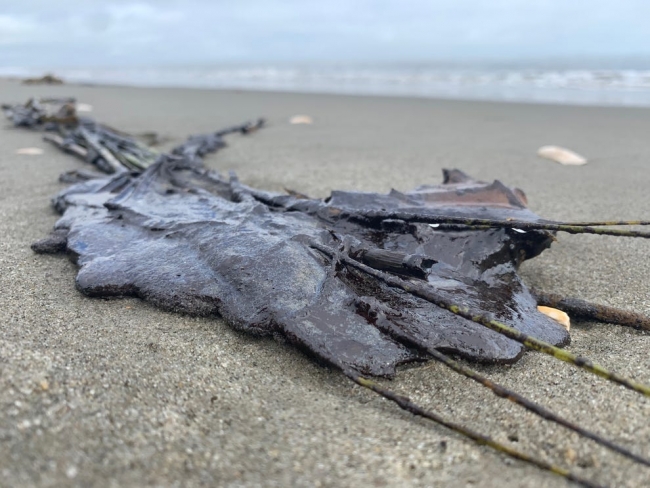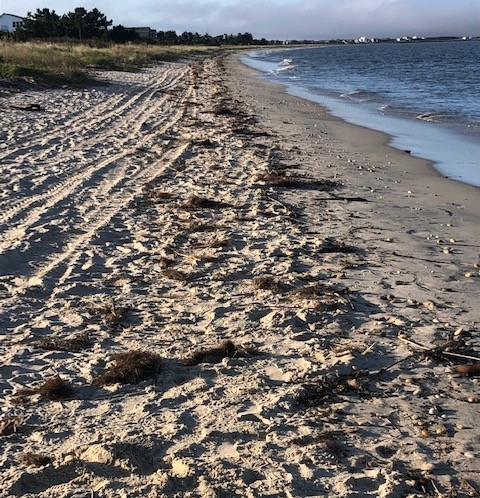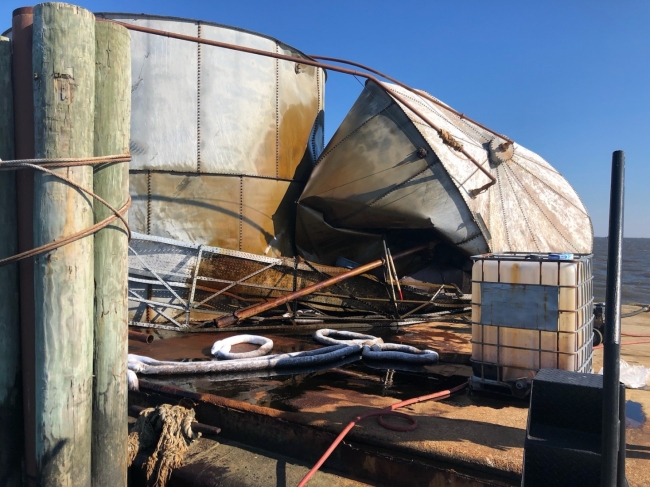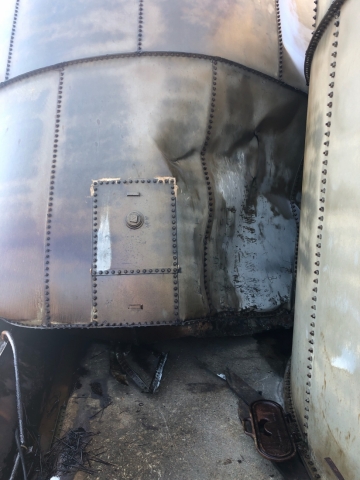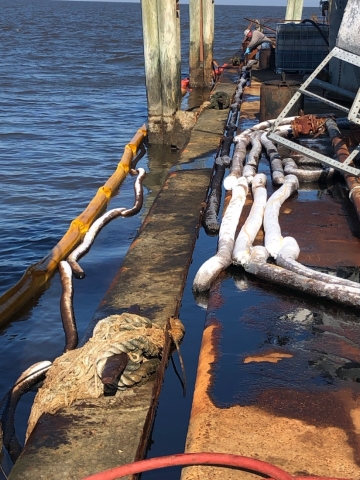
Every month our Emergency Response Division provides scientific expertise and services to the U.S. Coast Guard on everything from running oil spill trajectories to model where the spill may spread, to possible effects on wildlife and fisheries and estimates on how long the oil may stay in the environment.
This month OR&R responded to 15 incidents, including oil discharges, grounded vessels, and other pollution-related incidents.
Here are some of October's notable incidents:
Oil from Unknown Source Washes Ashore on Broadkill Beach, Delaware
After an unknown volume of heavy oil from an unknown source washed ashore on Broadkill Beach, Delaware on Oct. 19, NOAA’s Office of Response and Restoration went on scene at the request of the Coast Guard to assist in hindcasting and forecasting the spill.
Since that first day, tarballs have washed up on both bay-side and ocean-side beaches extending from Fowler Beach, Slaughter Beach, Prime Hook Refuge, Lewes, Cape Henlopen State Park, and continuing south to Rehoboth Beach, and Dewey Beach. On the morning of Oct. 26, the State of Maryland reported small amounts of tarballs coming ashore in Ocean City, Maryland. The cleanup continues more than one week later. Meanwhile, the Coast Guard continues to investigate the source of the spill and has spent over $1 million to date responding to the spill. Some Delaware beaches have been closed or have restricted access to facilitate cleanup.
The Coast Guard estimates that about 55 tons of oil, tarballs, oily sand and oiled debris — enough to fill four construction dumpsters — has been recovered so far. A Unified Command, consisting of the U.S. Coast Guard’s Sector Delaware Bay and the Delaware Department of Natural Resources and Environmental Control (DNREC), is managing the cleanup. An Incident Command Post has been established at the Slaughter Beach Volunteer Fire Department in Slaughter Beach. NOAA and the U.S. Fish and Wildlife Service are also assisting with the cleanup operations.
At the request of USCG Sector Delaware Bay, NOAA generated a trajectory model to assist with forecasting where the winds and currents may transport the tarballs, coordinated Endangered Species Act informal consultations with U.S. Fish and Wildlife Service and NOAA’s National Marine Fisheries Service, and have developed clean-up recommendations, best management practices, and clean-up end points.
The Unified Command has also received more than 60 reports of oiled birds, however, Tri-State Bird Rescue and Research, based in Newark, Delaware has not recovered any wildlife for rehabilitation.
Hurricane Zeta Damages Oil Tanks, Releases Over 21,000 Gallons of Oil
Hurricane Zeta, which hit Louisiana on Oct. 28, impacted a test facility near New Orleans — releasing an estimated 500 barrels (21,000 gallons) of crude oil from one of three tanks on the platform. The tank was discharging onto the platform and into the water.
The hurricane damaged all three tanks. Only the first lost all product, though another tank was releasing a minor discharge. Responders contained the leaking tank. No shoreline impacts have been observed at this time, and the site remains contained — with ongoing operations to recover the oily discharge from the leaking tank. Responders continue to work to safely remove the remaining oil from all the two tanks that still have product in them.
Here is the complete list of last month’s incidents, click on the links to find out more:
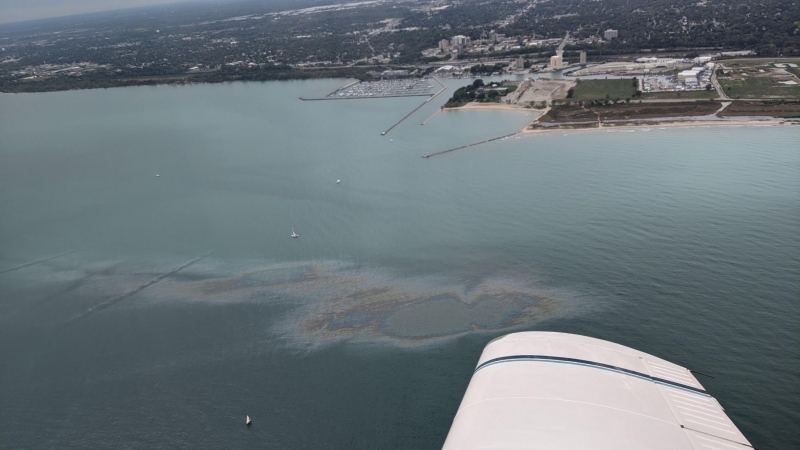
- Bulk Carrier Aground Welsh Island, Oregon
- Mystery Sheen, MSU Chicago
- Kamchatka Spill
- Hurricane Delta
- High Island 330 Sheen
- Trinity Bay Anomalies (MPSR)
- Salmon Bay Spill
- TS Nabarima-Off Venezuela
- Wooden Vessel Sinking La Conner Marina, WA
- Sunken Tug- Off Duluth Wisconsin
- Broadkill Beach Oil Spill, Delaware
- Liberty Ship Thomas Heyward
- M/V WILD WAVE aground
- Hurricane Zeta
- Saratoga Lobo Black Bay Spill

